곱셈 영어
곱셈 영어란?
곱셈 영어(Multiplication English)는, 곱하기 연산을 할 때 영어로 읽는 방법입니다. 예를 들어, 2 곱하기 3 이면 “Two times three”이라고 읽게 됩니다. 말 그대로 두 수를 곱할 때, 영어 단어로 읽어내는 것입니다.
곱셈 영어의 중요성은?
우리 생활에서 자주 사용하는 곱셈 연산인데요, 이를 영어로 읽어 보면 단순히 단어를 잊지 않기 위한 것이 아닌, 영어를 사용하는 환경에서 자주 사용되기 때문에 영어 학습에도 큰 도움을 줍니다. 영어 기초 단어력을 향상시키고, 영어 문장 구성과 억양, 리듬 등을 익히는 데 효과적인 연습 도구로 사용할 수 있습니다.
곱셈 영어 계산 방법
한 자리 수 곱셈 영어 계산 방법
한 자리 수 곱셈 영어 계산 방법은 매우 간단합니다. 낮은 자리 수부터 차례로 곱하고, 영어로 읽어주면 됩니다. 예를 들어, 5 곱하기 9를 한다면, 먼저 9를 읽은 후에 그 다음 5를 읽어준 후, times 라는 단어를 사용합니다. 정답은 “Five times nine is forty-five”입니다.
두 자리 수 곱셈 영어 계산 방법
두 자리 수 곱셈 영어 계산 방법은 한 자리 수 곱셈 영어보다는 좀 복잡합니다. 우선, 먼저 곱하려는 두 수 중 더 작은 수의 낮은 자리 수부터 차례로 곱해줍니다. 이어서, 두 수 중 더 큰 수의 각 자리 수에 대하여 곱셈과 덧셈을 수행합니다. 그 다음, 0 을 넣고, 아까 곱한 자리 수들을 배치한 후, 영어 단어로 읽어주면 됩니다.
곱셈 영어 예시
실제 곱셈 영어 문장 예시
3 곱하기 4은 어떻게 읽을까요? “Three times four”이 제대로 된 답입니다. 또 다른 예시로 9 곱하기 7은 “Nine times seven is sixty-three”입니다.
영어 문장에서의 곱셈 영어 사용 예시
수학적인 곱셈 연산이 아닌, 생활 속에서도 자주 사용되는 곱하기 단어의 영어 표현들을 보면,
– double, twice, triple, quadruple, quintuple 등
예를 들어, “Can you please double check my work?”는 “내 작업물에 대해 아주 정확히 한번 다시 확인 부탁드려요”의 뜻처럼 double은 ∗2를 의미합니다. 또한, “I triple checked my passport before leaving”은 “나는 출발하기 전에 내 여권을 삼 번이나 체크했다”는 뜻으로 triple은 ∗3을 의미합니다.
곱셈 영어의 활용
곱셈 영어의 활용 분야
우리가 아는 대로, 영어 주요국에서는 영어로 의사소통하는 것은 당연한데요, 비즈니스, 외교, 문학, 연예 등 광범위한 분야에서 영어 사용이 필수적입니다. 이 중에서도, 영어로 문서를 작성하거나 프리젠테이션 등을 하면서 수치 자료를 전달해야 하는 경우가 매우 많은데, 이때 곱셈 영어를 통해 간결하고 체계적인 자료를 전달할 수 있습니다.
곱셈 영어의 활용 방법
곱셈 영어는 단순히 영어 단어를 암기하는 것이 아니라, 계산과 더불어 흐름을 읽어내는 실력을 기를 수 있는 연습 방법입니다. 필요한 자료를 만들고, 스크립트를 작성한 후에 발음, 억양 등을 모두 연습해 보는 것이 좋습니다. 또한, 다른 사람의 연습 영상을 보며 감상하거나, 발음에 맞춰 따라 읽는 방법도 효과적입니다.
곱셈 영어의 중요성
계산 능력 향상에 미치는 영향
곱셈 영어는 계산 능력을 키울 때 매우 유용한 연습 방법 중 하나입니다. 그 이유는, 영어 단어를 읽어내는 능력 자체가 단순한 암기가 아니라 패턴을 파악하면서 몸에 익히는 연습이기 때문입니다. 또한, 단어와 숫자, 출제자와 수험자간의 커뮤니케이션 방식이 통일되므로, 오해와 실수를 줄일 수 있습니다.
문제 해결 능력 강화를 위한 곱셈 영어 연습 방법
문제 해결 능력을 키우기 위해서는, 문제를 파악하는 것이 중요한데요, 곱셈 영어를 통해 문제를 해결하는 것은 딱 문제의 문학적 방식과 일치합니다. 예를 들어, 15 명 중에서 3 최대 6 명까지만 참여 가능하다면, “3 의 5승” 이라는 식에서 15 대신 “??? people” 이라는 식으로 변형해 본 후에, 곱셈 영어로 문제를 다시 읽어보는 식으로 해결할 수 있습니다.
곱셈 영어 학습 방법
곱셉 영어의 학습 순서
곱셈 영어를 학습할 때 가장 먼저 해야할 것은, 영어 단어와 그 단어와 숫자 연결 고리를 외우는 것입니다. 이어서 본인이 원하는 단어와 숫자를 섞어서 문장을 만든 후에, 발음과 억양, 리듬 등을 확인하는 것이 좋습니다. 그리고 기초 능력이 쌓이면, 문장 구성이나 치어리딩 등을 포함한 매우 복잡한 표현도 시도해 볼 수 있습니다.
곱셈 영어 학습을 위한 도구와 자료
곱셈 영어 학습에 많은 도움을 줄 수 있는 서적과 웹사이트 등이 많이 있습니다. 이 중에서도, “Barron’s Painless Series”와 “Speed Mathematics Simplified” 등을 추천할 수 있습니다. 또한, YouTube 같은 비디오 컨텐츠나 온라인 커뮤니티, SNS 등도 도움이 되는 자료들이 있습니다.
곱셈 영어의 미래
곱셈 영어의 발전 방향
곱셈 영어는 생각보다 유용한 기술입니다. 온라인 상에서 수학 강의나 계산기 등에서 많이 사용되며, 애니메이션과 게임 분야에서는 곱셈 영어가 많이 사용됩니다. 또, 최근에는 딥러닝 기술을 접목한 수학 교육 관련 앱도 개발 중이며, 이에 곱셈 영어도 함께 적용될 가능성이 높습니다.
곱셈 영어의 미래에 대한 전망
곱셈 영어는 우리 일상에서 꼭 필요한 기술입니다. 영어 공부에 큰 도움이 되고, 비즈니스, 문학, 연예 등에서도 많이 사용되고 있습니다. 앞으로도 새로운 분야에서 계속해서 활용될 예정이며, 기술적인 발전으로 인해 더욱 발전할 것입니다.
FAQs
Q1) 곱셈 영어 외에 다른 연산에도 사용되는 영어 표현이 있나요?
A) 나눗셈 영어로(divided by), 빼기 영어로(minus), 곱하기 영어로(multiply), 덧셈 영어로(plus), 연산자 영어로(operator), 제곱 영어곱셈 영어(power) 등이 있습니다.
Q2) 곱셈 영어 연습을 어떻게 시작해야 할까요?
A) 기초적인 영어 단어와 숫자 곱셈을 연습해 보세요. “Two times three is six”이나 “Four times two is eight”과 같은 간단한 문장부터 시작해서, 발음과 억양을 체크하면서 연습해 보세요.
Q3) 곱셈 영어를 학습할 때 어떤 점에 주의해야 할까요?
A) 발음, 억양, 리듬의 정확한 파악이 핵심입니다. 또한, 문장 구성에 따른 어법을 잘 파악하여, 매끄러운 흐름의 문장을 만드는 것이 중요합니다. 반복적인 연습을 통해, 몸에 익히도록 노력해 보세요.
사용자가 검색한 키워드: 곱셈 영어 나눗셈 영어로, 빼기 영어로, 곱하기 영어로 읽기, 덧셈 영어, 곱하기 함수, 엑셀 곱하기 함수, 연산자 영어로, 제곱 영어
Categories: Top 17 곱셈 영어
더하기 빼기 곱하기 나누기 덧셈 뺄셈 곱셈 나눗셈 영어로 읽기
여기에서 자세히 보기: moicaucachep.com
나눗셈 영어로
Basics of division
Division is the process of splitting a number into equal parts. We use the symbol ÷ or / to represent division. The number that is being divided is called the dividend, while the number that the dividend is being divided by is called the divisor. The result of a division problem is called the quotient.
For example, if we divide 10 by 2, we write 10 ÷ 2 = 5. Here, 10 is the dividend, 2 is the divisor, and 5 is the quotient. We can also write this as a fraction: 10/2 = 5.
Applications of division
Division is used in many areas of life, including math, science, and finance. In math, division is used to solve problems involving ratios, proportions, and fractions. For example, if a recipe calls for 2 cups of flour and we want to make half the recipe, we would divide 2 by 2 to get 1 cup of flour.
In science, division is used to calculate rates and concentrations. For example, if we want to calculate the speed of an object, we would divide the distance traveled by the time it took to travel that distance.
In finance, division is used to calculate percentages and to split expenses. For example, if a group of friends went out to eat and the bill was $100, they could divide the bill evenly among themselves to figure out how much each person owes.
FAQs about 나눗셈 영어로
Q: What do I do if the divisor is 0?
A: You cannot divide by 0. This is undefined. If the divisor is 0, the answer is undefined.
Q: What do I do if the dividend is 0?
A: If the dividend is 0, the answer is always 0.
Q: How do I check my answer to a division problem?
A: You can check your answer by multiplying the quotient by the divisor. The product should be equal to the dividend. For example, if we divide 12 by 3 to get 4, we can check our answer by multiplying 4 by 3, which equals 12.
Q: What is long division?
A: Long division is a method of dividing two numbers when the divisor has more than one digit. It involves the process of dividing, multiplying, and subtracting until the remainder is 0. This method is taught in elementary school and is used to teach students how to divide larger numbers.
Q: What is a remainder?
A: A remainder is the amount left over when one number cannot be evenly divided by another number. For example, if we divide 10 by 3, we get a quotient of 3 with a remainder of 1. The remainder is written as a fraction over the divisor, so in this case, the remainder is written as 1/3.
Q: What is a decimal?
A: A decimal is a way of writing a fraction with a denominator of 10 or a power of 10. For example, 0.5 is the decimal form of 1/2, and 0.25 is the decimal form of 1/4. Decimals are commonly used in everyday life to represent parts of a whole, such as money.
Q: How do I convert a fraction to a decimal?
A: To convert a fraction to a decimal, divide the numerator by the denominator. For example, to convert 1/4 to a decimal, we divide 1 by 4 to get 0.25.
Q: How do I convert a decimal to a fraction?
A: To convert a decimal to a fraction, write the decimal as a fraction with the decimal as the numerator and 1 as the denominator. Then, multiply both the numerator and denominator by 10 until the decimal becomes a whole number. Simplify the fraction if possible. For example, to convert 0.75 to a fraction, we write it as 0.75/1, then multiply both the numerator and denominator by 100 to get 75/100. We can simplify this fraction by dividing both the numerator and denominator by 25 to get 3/4.
In conclusion, 나눗셈 영어로, or division in English, is a basic arithmetic operation used to divide one number by another. It is commonly used in everyday life and in various fields such as math, science, and finance. Understanding the basics of division can help us solve problems in our daily lives and be more efficient in our work. By familiarizing ourselves with some frequently asked questions about 나눗셈 영어로, we can become more confident in our ability to divide numbers.
빼기 영어로
As in any language, the vocabulary of math has its own jargon, and the Korean language is no exception. In Korea, subtraction is called 빼기 (baegi), which is a term used to denote the process of subtracting one number from another. In this article, we will delve deeper into the meaning of 빼기, how it works, and how to solve subtraction problems efficiently.
How does 빼기 work?
The process of 빼기 involves taking one number subtracted from another number. The result is the difference between the two numbers. For example, suppose we have 6 apples and give away 3 apples. The result is that we have 3 apples left. Therefore, we can say that 6 minus 3 equals 3.
In mathematical terms, subtracting 3 from 6 can be represented as:
6 – 3 = 3
The symbol “-” represents subtraction in math, and it is used to show the difference between two numbers. The number on the left of the “-” symbol is called the minuend, and the number on the right is called the subtrahend. The result of the subtraction operation is called the difference.
Solving a subtraction problem generally involves various steps, such as identifying the minuend and subtrahend, placing each number in the correct column, borrowing as needed, and then subtracting each digit from right to left. Let’s consider the following example:
432 – 68 = ?
To solve this problem, we start from the rightmost digits and subtract them, one column at a time. We start with the ones, then move to the tens, and so on. In this example, we can subtract the units column without any borrowing, since 2-8 is a negative number. Therefore, we borrow one digit from the tens column to make up for the deficit.
4 3 2
– 6 8
———
__ 6 4
Thus, we can see that 432 – 68 equals 364.
FAQs
1. How can I improve my subtraction skills?
A: One way to improve your subtraction skills is through regular practice and repetition. Additionally, a strong foundation in arithmetic operations, such as addition, multiplication, and division, can help improve your overall calculation accuracy.
2. What do the terms minuend and subtrahend mean?
A: The minuend is the number from which another number is subtracted. The subtrahend is the number that is being subtracted from the minuend.
3. Can I perform subtraction operations using a calculator?
A: Yes, most calculators have the capability to perform subtraction operations. However, it is essential to have a good understanding of the subtraction process to ensure that the calculator’s results are accurate.
4. Are there any shortcuts to solving subtraction problems?
A: Yes, there are several shortcuts, or mental math tricks, to solving subtraction problems. One such strategy involves finding the nearest multiple of ten and then adding or subtracting from that number to find the difference.
5. What are some real-life applications of subtraction?
A: Subtraction operations are used in various fields, such as finance, engineering, and science. Examples include calculating interest payments on loans, determining the change owed to customers, or finding the difference in temperature readings.
In conclusion, 빼기 or subtraction is an essential mathematical operation used in various fields, such as statistical analysis, finance, engineering, and more. Understanding the process of subtraction can help individuals solve problems and make informed decisions, as it requires a rigorous, logical, and systematic approach. Thus, mastering subtraction skills is a valuable skill to have, both academically and in real-life applications.
곱하기 영어로 읽기
Multiplication is a fundamental arithmetic operation and an essential mathematical skill that every student must learn. However, learning multiplication can be challenging, especially for non-native English speakers.
In this article, we will explore the concept of 곱하기 영어로 읽기 in more detail, including its importance and how to approach learning this skill. We will also answer some frequently asked questions about this topic.
Why is 곱하기 영어로 읽기 important?
Multiplication is an integral part of mathematics and is used in various real-life situations. For example, when calculating the total cost of multiple items or when calculating the distance traveled in a certain amount of time, one needs to know how to perform multiplication. Therefore, mastering multiplication is crucial for everyday activities and future academic success.
When learning multiplication in a non-native language, such as English, it can be challenging for students to understand the mathematical concepts and perform the operations accurately. For instance, English speakers use different words and phrases to describe multiplication in different contexts, making it difficult for non-native speakers to recognize and interpret the operation.
Furthermore, learning how to read multiplication in English improves communication with English speakers, which is an essential skill in today’s globalized society. Therefore, 곱하기 영어로 읽기 is a necessary skill that students learning English as a second language must acquire.
How can students approach learning 곱하기 영어로 읽기?
Learning 곱하기 영어로 읽기 involves developing two critical skills; understanding multiplication and reading in English. Here are some tips to help students improve both skills.
1. Understand the concept of multiplication
Understanding the concept of multiplication is essential before learning how to read it in English. Multiplication is a mathematical operation that involves adding a number to itself multiple times. For example, 2 x 4 means adding 2, four times, which is equivalent to 2 + 2 + 2 + 2 = 8.
Students should learn the multiplication tables up to 12, as this forms the basis of all further learning. Additionally, they need to understand the properties of multiplication, such as commutative, associative, and distributive properties.
2. Learn common multiplication keywords in English
When learning how to read multiplication in English, students must know common keywords that describe the operation. For example, English speakers sometimes use the word “times” to describe multiplication, such as 2 times 4. Other key phrases include “multiplied by,” “product of,” and “times table.”
Students should practice using these keywords in different contexts to improve understanding and recognition of multiplication in English.
3. Practice reading and solving multiplication problems in English
Once students understand multiplication and have learned common multiplication keywords in English, they should practice solving multiplication problems in English. Students can start by reading simple multiplication problems out loud, using the appropriate multiplication keywords.
For example, if the problem is “4 x 3 = ?,” the student should read it as “four times three equals what.” By practicing reading and solving problems in English, they will improve their language and math skills simultaneously.
Frequently asked questions about 곱하기 영어로 읽기
1. How do I know when to use “times” or “multiplied by” in English?
The terms “times” and “multiplied by” are interchangeable, and there is no strict rule about when to use one over the other. However, “times” is more commonly used in informal contexts, while “multiplied by” is used more frequently in formal situations, such as in academic writing.
2. How can I improve my multiplication skills in English?
To improve multiplication skills in English, students should practice reading and solving multiplication problems in English regularly. Additionally, they should seek help from teachers, tutors, or online resources if they encounter difficulties understanding multiplication concepts or keywords.
3. Are there any shortcuts to learning multiplication?
Yes, there are several shortcuts to learning multiplication, such as using multiplication tables, breaking down larger numbers into smaller ones, and using mental math techniques. However, it is essential to remember that shortcuts do not substitute for understanding the concept of multiplication, and students should still practice solving problems regularly to improve their skills.
4. What are some common mistakes when learning 곱하기 영어로 읽기?
Common mistakes when learning 곱하기 영어로 읽기 include using the wrong multiplication keyword, confusing the order of multiplication in a problem, and misreading or misinterpreting the numbers involved in the problem. To avoid these mistakes, students should use common multiplication keywords, double-check their work, and take their time when solving problems.
Conclusion
Learning 곱하기 영어로 읽기 is a crucial skill for students learning English as a second language. By understanding the concept of multiplication, learning common multiplication keywords in English, and practicing reading and solving multiplication problems in English, students can improve their language and math skills simultaneously. Remember to take your time when solving problems and seek help from tutors or online resources if necessary. With dedication and practice, anyone can master 곱하기 영어로 읽기.
주제와 관련된 이미지 곱셈 영어

곱셈 영어 주제와 관련된 이미지 41개를 찾았습니다.


![초등 영어] 에이미 선생님의 '곱셈과 곱하다를 영어로 어떻게 표현할까요?' 초등학교 인터넷 강의 동영상 (초등 인강) - YouTube 초등 영어] 에이미 선생님의 '곱셈과 곱하다를 영어로 어떻게 표현할까요?' 초등학교 인터넷 강의 동영상 (초등 인강) - Youtube](https://i.ytimg.com/vi/3e7Yp3qzbyg/maxresdefault.jpg)





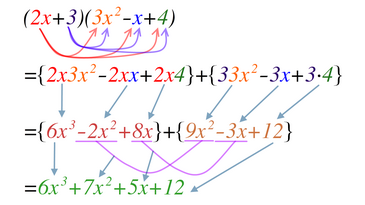

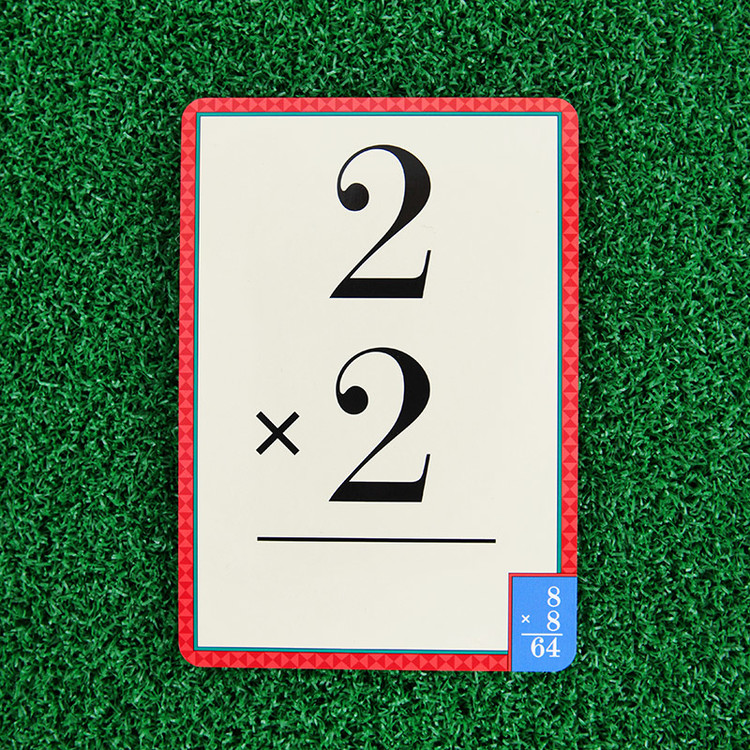








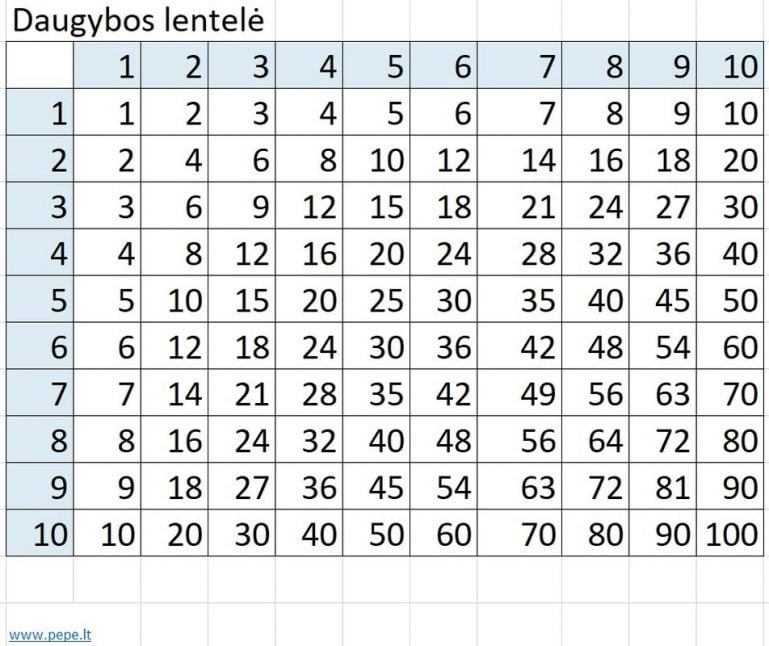

![엠투월드] 구구크로스 (1~4인용 , 선생님 기획 구구단 초등 곱셈 암산 수학 보드게임 ) - 엠투월드 쇼핑몰 엠투월드] 구구크로스 (1~4인용 , 선생님 기획 구구단 초등 곱셈 암산 수학 보드게임 ) - 엠투월드 쇼핑몰](https://www.m2store.co.kr/data/goods/1/2022/03/_temp_16471824891940view.jpg)




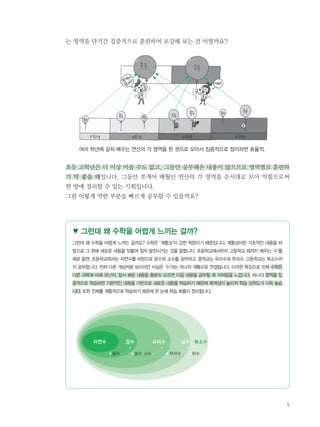



![초등5-1]덧셈, 뺄셈, 곱셈이 섞여 있는 식 - YouTube 초등5-1]덧셈, 뺄셈, 곱셈이 섞여 있는 식 - Youtube](https://i.ytimg.com/vi/1lAd9WrVmD8/maxresdefault.jpg)



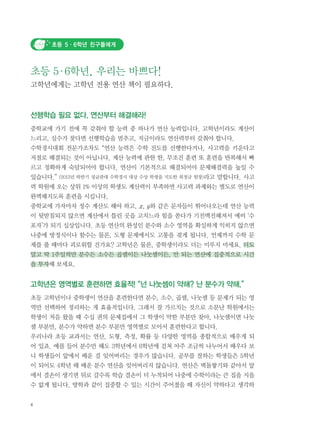




Article link: 곱셈 영어.
주제에 대해 자세히 알아보기 곱셈 영어.
- 곱셈/multiplication – 수학사랑
- 곱하기 영어로 뭘까? 의외로 모르는 사람이 많은 곱셈 … – 탁이로그
- 곱셈 – 위키백과, 우리 모두의 백과사전
- [영어표현] 곱하기와 배수 영어로 말하기 – Open Study
- “덧셈, 뺄셈, 곱셈, 나눗셈” 사칙연산을 영어로? – 영어 공부
- 영어 Translation of “곱셈” | Collins Korean-English Dictionary
더보기: blog https://moicaucachep.com/blog